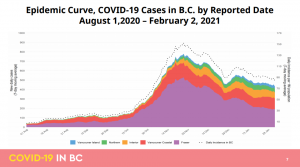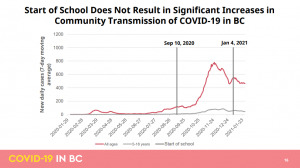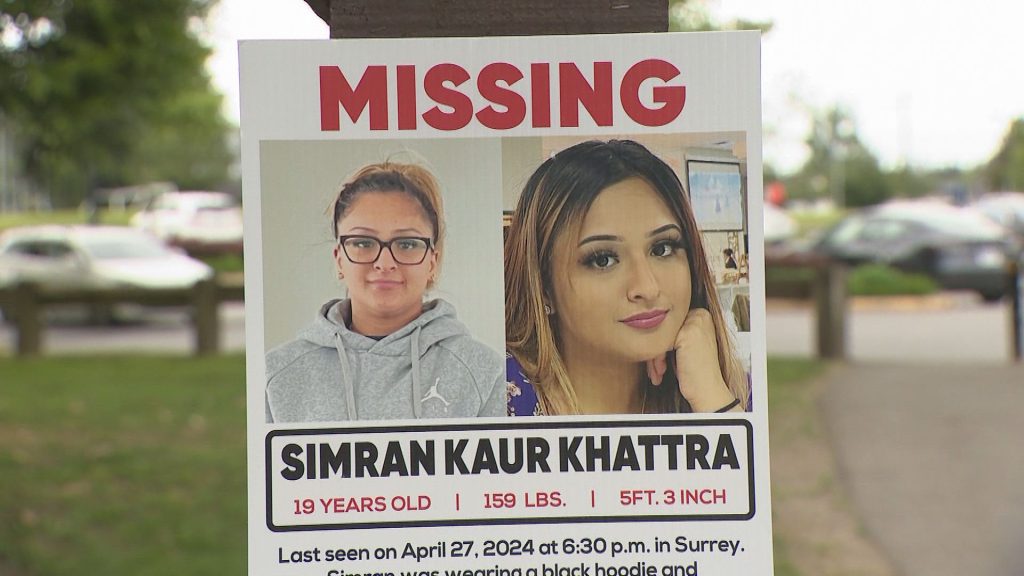B.C. COVID-19 modelling data shows ‘encouraging’ signs but possible to ‘slip’
Posted February 5, 2021 12:26 pm.
VANCOUVER (NEWS 1130) – There has been a levelling off of COVID-19 infections and hospitalizations in B.C. since the province hit new highs late last year, with data showing stable or declining trends in every health authority.
Provincial Health Officer Dr. Bonnie Henry noted deaths peak later in comparison, and have started to decrease as well. Since immunizations started, she said there have been “encouraging” signs as the curve slowly started bending in the right direction, despite it being too early to scale back restrictions.
The most encouraging aspect of today’s modelling presentation: “our model outputs describe stable or declining trends in all regional health authorities.”
The modelling does however indicate in scenarios where our contacts with others rise, that progress could be lost. https://t.co/eefamIAQ35
— Martin MacMahon (@martinmacmahon) February 5, 2021
B.C. is not in a position where restrictions can change yet. While Henry notes “we are on a good trajectory,” it is still too early to start increasing social contacts, especially with contagious variants in the community.
RELATED: B.C. extends COVID-19 restrictions indefinitely
“It means that even if we slip a little bit, that potential for transmission goes up. And this is what is concerning for us right now,” she said. We do not need or want to be in that situation where we start to see rapid growth.”

While the majority of infections in B.C. are linked to known cases, the variants are being transmitted in the community, climbing to 28 cases in total. It hasn’t been determined where five of the people who tested positive for the variant linked to South Africa contracted it.
“We don’t seem to be seeing widespread variants here in the province yet, but we are stepping up our targeted surveillance to better understand where we are,” Henry said.
Re: tracking for variant strains, Henry says new screening strategy is in the works to examine thousands of samples per week.
As of Thursday, 28 cases confirmed and #UK variant remains most widespread with 20 cases confirmed so far. #bcpoli @NEWS1130 pic.twitter.com/RPLBP3Nw31— Marcella Bernardo (@Bernardo1130) February 5, 2021
So far, 145,567 doses of the vaccine have been given as of Wednesday, which Henry said accounts for less transmission of the virus in people over the age of 80.
“That is very gratifying for us as it reflects the protection that we’ve been able to provide people primarily in long term care homes,” she said.
Eighty-seven per cent of long-term care residents have received their first dose of the vaccine, with two per cent getting their second dose.
The province monitors for “safety signals” that come up when large amount of vaccines are distributed.
While there haven’t been any specific safety signals, there have been 205 “adverse events” following immunizations. Fifty-five of those were serious, which could mean a severe allergic reaction.

There has been more transmission in areas of B.C. that haven’t had as much COVID-19 activity in the past, with the virus is spreading more than it has before in the Interior and Northern regions.
“There has been no area of the province that has been spared from this virus,” Henry said.
However, the hard-hit Fraser Health area, particularly Surrey, has seen a decrease in cases.

When school started again after the winter break, data shows it wasn’t a significant source of community transmission.
“School-aged children are underrepresented, still a less than 10 per cent of our cases overall, and we see a decrease in cases once school is starting – reflecting, really, transmission in the community,” Henry said.
The age group with the most frequent transmission of the virus is between the ages of 20 to 29.
“We also see that it’s people between the ages of 20 and 49, which are driving the pandemic at this point,” Henry added.
Based on the current situation, Henry extended the health orders until further notice.
Miss the update? Watch it here:
Read the full report:
Ministry of Health COVID-19 Modelling slides-20210205









